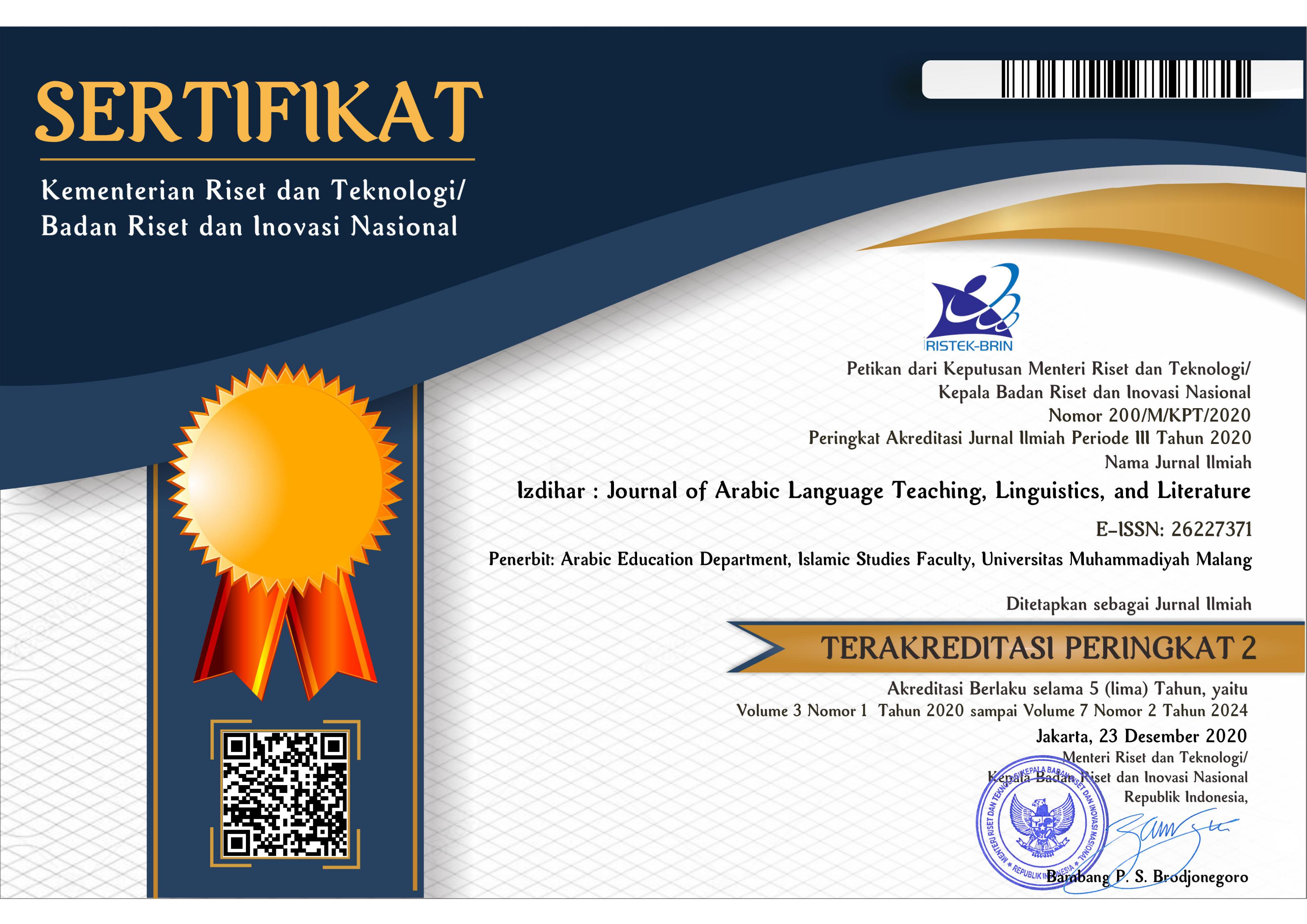About the Journal
| Journal title | Izdihar : Journal of Arabic Language Teaching, Linguistics, and Literature |  |
|---|---|---|
| Initials | JIz | |
| Frequency | 3 issues per year (April, August, and December) | |
| DOI | prefix 10.22219 by |
|
| Print ISSN | 2622-738X | |
| Online ISSN | 2622-7371 | |
| Editor-in-Chief | Abdul Haris (haris@umm.ac.id) | |
| Man/Han. Editor | Lailatul Mauludiyah (elimauludiyah@umm.ac.id) | |
| Publisher | Universitas Muhammadiyah Malang | |
| Cite Analysis | Google Scholar | |
| Indexing | DOAJ l SINTA 2 l BASE l GARUDA |
Izdihar : Journal of Arabic Language Teaching, Linguistics, and Literature is an open-access journal in the Arabic Education Department. This journal is available for researchers who want to improve knowledge in those particular areas and intend to spread the knowledge as a result of studies. Izdihar is a scientific research journal of Arabic language teaching, linguistics, and literature. It is open to anyone who desires to develop knowledge based on qualified research in any field. Submitted papers are evaluated by anonymous reviewers by double-blind peer review for contribution, originality, relevance, and presentation. This journal is published three times a year (April, August, and December).
The scopes of this journal are Teaching and Learning Arabic for Non-Native, Arabic Teaching Curriculum, Arabic Teaching Material, Arabic Teaching Methods, Arabic Teaching Strategy, Arabic Teaching Media, Arabic Teaching Instructional Evaluation and Assessment, Arabic Teaching Technology, Information and Communication Technology for Arabic Teaching, Arabic for Specific Purposes, Arabic Linguistics, Modern Standard Arabic, Arabic Second Language Acquisition, Arabic Language Literature, Arabic Language History, History of Arabic Language Education, and Arabic Islamic Culture.
Izdihar (Journal of Arabic Language Teaching, Linguistics, and Literature) has been indexed, abstracted, and displayed in Garuda (Garda Rujukan Digital), One Search, Google Scholar, BASE, Crossref (doi: 10.22219) and ROAD ISSN. Since March 13, 2019, Izdihar has been indexed by DOAJ indexing. The OAI address of Izdihar (Journal of Arabic Language Teaching, Linguistics, and Literature): http://ejournal.umm.ac.id/index.php/izdihar/oai.
This journal is published by the Arabic Education Department, Islamic Studies Faculty, Universitas Muhammadiyah Malang. Izdihar was first published in August 2018. It has both print ISSN (p) 2622-738X and online ISSN (e) 2622-7371. For details visit the journal history.

















